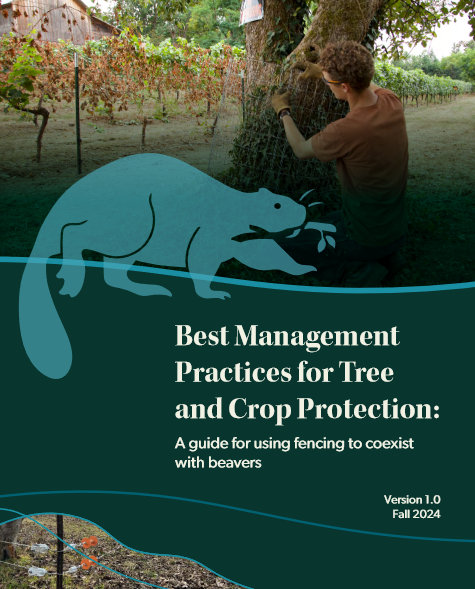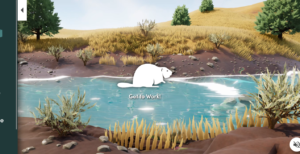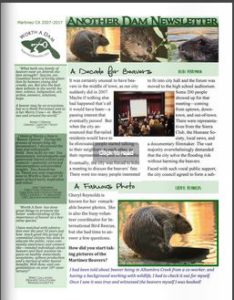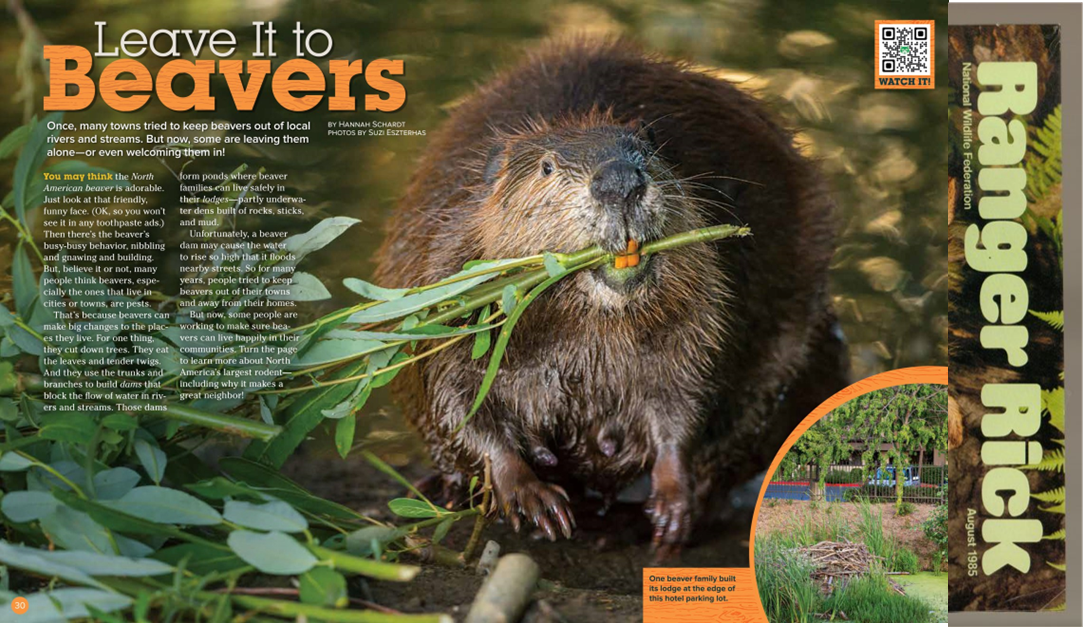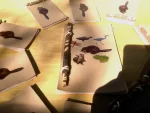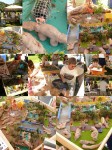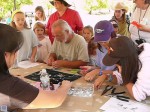This site is just missing something. I’m not sure what. We talk about everything under the sun and waterline here at our very committed beaver coffee club, but there’s something we forgot. I can’t put my finger on it but there’s something we almost never write about here at beaver central.
Oh wait, I just remembered. The benefits of beaver dams in Tennessee.
What Did the Fish Say When He Ran Into the Wall?
DAM! ? The wetland at TN State University university was not always a wetland. Does my hilarious joke give you a hint as to how it was formed? You guessed it…what was once a stream leading into the Cumberland River was dammed by a group of beavers. Beavers are what is known as an ecosystem engineer. Ecosystem engineer alter the environment around them for their benefit, other species benefit, or both (Hall, 2016). The ariel images below show how the beavers have changed this particular landscape. The above image was taken in 2005 and the below, current image was taken in 2016. The beavers may not have realized, but their work has created a valuable wetland as it is in a highly developed part of the state.

 Dr. Sutton took our Wetland Ecology and Management class out to the wetland to practice observing the three main wetland indicators we had been learning about: hydrology, hydric soil, and hydrophytic vegetation. Our first stop was to observe the characteristics of the hydrology, what was in sight from where we were standing can be seen in the top photo. We were standing in the eastern area of the wetland and noted that the hydrology was channelized and we could see evidence of beaver activity. We notes that Box Elder was present at the bank full line. Box Elder is facultative, which means it occurs in both wetland environments and non-wetland environments (www.rnr.lsu.edu).
Dr. Sutton took our Wetland Ecology and Management class out to the wetland to practice observing the three main wetland indicators we had been learning about: hydrology, hydric soil, and hydrophytic vegetation. Our first stop was to observe the characteristics of the hydrology, what was in sight from where we were standing can be seen in the top photo. We were standing in the eastern area of the wetland and noted that the hydrology was channelized and we could see evidence of beaver activity. We notes that Box Elder was present at the bank full line. Box Elder is facultative, which means it occurs in both wetland environments and non-wetland environments (www.rnr.lsu.edu).

As we had learned that cattails are obligate species, meaning they are found in wetlands 99% of the time, we hypothesized that the change in vegetation type indicated a change in the water table. This type of thinking is great for when you are doing field work, it is helpful when you would need to establish a boundary for sampling or surveying.
The last indicator we looked for was hydric soil. We dug a hole near the cattails and found that the water table was easily uncovered and we moved away towards the short shrubbery it took more digging to find signs of water. The soil horizon near the cattails showed oxidized rhizospheres (discussed in previous post), indicating prolonged periods of saturation. By these oxidized rhizospheres, the sulfuric smell, the lack of visible organic matter, and the density of the soil indicated that the soil at the TSU wetland is mineral soil, particularly clay soil.
Well whadya know, beaver dams save water both above and below the ground. I like that more every single time I hear it, but I like it a LOT when I hear it from Tennessee.
It’s kind of amazing that they’ve been allowed to live on campus for 11 years and change the wetlands so much. I imagined Dr. Sutton might have had something to do with that but it turns out this is his first year teaching there. Guess where he was before. Go ahead Guess!
 Clemson University in Georgia where they invented one of the very first flow devices.
Clemson University in Georgia where they invented one of the very first flow devices.
The man has obviously had some beaver education in his background, And now these students do also. They learned to spot the hydrophytic vegetation between zones, and learn that BEAVERS were responsible for them.



 The meeting was in an older shabby office space on San Pablo Avenue and I had hunt hard for parking among the homeless. I remember Gary was there, although I didn’t know him then and only recognized hm from his photo in the paper. Terry was very reassuring and said quietly what she hoped I could focus on. And then the, to my surprise, the board asked my thoughts and talked about the Martinez Beavers, whether they were good for the environment, and whether they should risk annoying anyone to get involved.
The meeting was in an older shabby office space on San Pablo Avenue and I had hunt hard for parking among the homeless. I remember Gary was there, although I didn’t know him then and only recognized hm from his photo in the paper. Terry was very reassuring and said quietly what she hoped I could focus on. And then the, to my surprise, the board asked my thoughts and talked about the Martinez Beavers, whether they were good for the environment, and whether they should risk annoying anyone to get involved.
 According to The Lands Council (Spokane, WA; 2010), in their
According to The Lands Council (Spokane, WA; 2010), in their  Sunday I did a little research for my upcoming SARSAS talk by checking out the references listed in the salmon-steelhead summary of the
Sunday I did a little research for my upcoming SARSAS talk by checking out the references listed in the salmon-steelhead summary of the  Fran Recht works for the Habitat program for the
Fran Recht works for the Habitat program for the  The first is a presentation by Carol Evans formerly with the BLM in Nevada. She presented recently at the
The first is a presentation by Carol Evans formerly with the BLM in Nevada. She presented recently at the 



